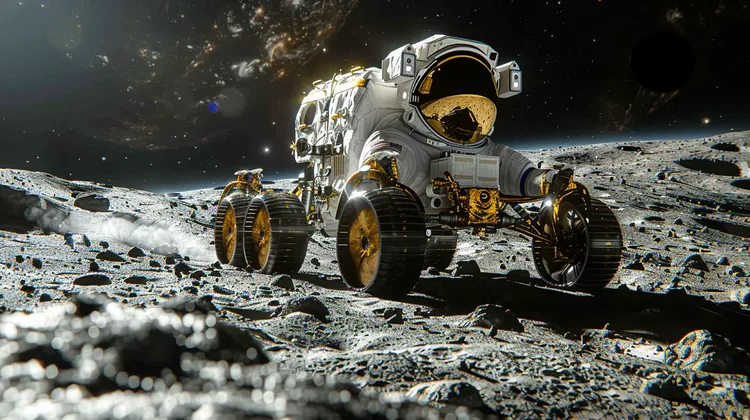
NASA’s VR Metaverse: Preparing Astronauts for Life on Lunar Space Station
Astronauts from NASA and SpaceX are utilizing the metaverse not for recreational purposes, but for training and preparing for life on a lunar space station. This space station, known as “Gateway,” is currently under development and is described by NASA as a science lab, spaceship, and home for international astronauts. In the past, astronauts have relied on physical and computer-based simulators for training, but with the emergence of virtual reality headsets and advanced spatial computing technologies, they can now immerse themselves in a 3-D environment to acquire the necessary skills for deep space missions.
Gateway is expected to make its debut in space around 2025, once its power and propulsion systems are set up in orbit around the Moon. Its purpose extends far beyond Earth, as it serves as a staging point for the Artemis program, which aims to establish a crewed base on the Moon as a stepping stone towards sending humans to Mars. NASA describes Gateway as a crucial component of the Artemis missions, providing support for lunar surface missions, conducting scientific research, and serving as a launching point for further exploration in deep space.
The astronauts assigned to Gateway will face the extraordinary challenge of being the first crew to live and work in deep space. They will be located at a maximum distance of approximately 386,243 kilometers from Earth, which is significantly farther than the International Space Station (ISS) that orbits at an average distance of around 400 kilometers. This pioneering effort will require the crew to adapt to the unique conditions and demands of deep space, relying on their training in the metaverse to navigate and operate effectively.
By utilizing virtual reality and advanced spatial computing technologies, astronauts can simulate the experience of living and working in deep space. These immersive environments allow them to practice various tasks and scenarios, such as maintenance procedures, emergency protocols, and scientific experiments. The virtual training provides a more realistic and detailed simulation compared to traditional methods, enabling astronauts to develop the necessary skills and adaptability for life in the challenging environment of deep space.
Gateway represents a significant milestone in space exploration, as it paves the way for future missions to the Moon and Mars. Its establishment as a multi-purpose outpost will facilitate lunar surface missions, enable scientific discoveries, and act as a critical hub for further deep space exploration. The success of Gateway and its crew will not only contribute to scientific advancements but also provide invaluable knowledge and data for humanity’s quest to conquer new frontiers beyond Earth.
While many people may see the metaverse as a virtual playground, astronauts from NASA and SpaceX are using it as a training tool to prepare for life on the lunar space station Gateway. This next-generation science lab and spaceship will play a crucial role in the Artemis program, serving as a staging point for missions to the Moon and acting as a stepping stone towards sending humans to Mars. The utilization of virtual reality and spatial computing technologies allows astronauts to gain the necessary skills and experience to live and work in the challenging environment of deep space. As Gateway prepares for its off-Earth debut, it represents a significant leap forward in humanity’s exploration of the cosmos.
5 thoughts on “NASA’s VR Metaverse: Preparing Astronauts for Life on Lunar Space Station”
Leave a Reply
You must be logged in to post a comment.
So now astronauts are just playing video games instead of doing actual work?
Virtual reality training is a cop-out. Astronauts should be focusing on real training, not living in a fantasy world.
Just what we need, astronauts living in a fantasy world instead of dealing with reality.
Virtual reality training is just a way for NASA and SpaceX to look cool. It’s not actually going to help astronauts.
It’s mind-boggling to think about how astronauts can now immerse themselves in a 3-D environment to prepare for deep space missions. Virtual reality is truly revolutionizing training methods!